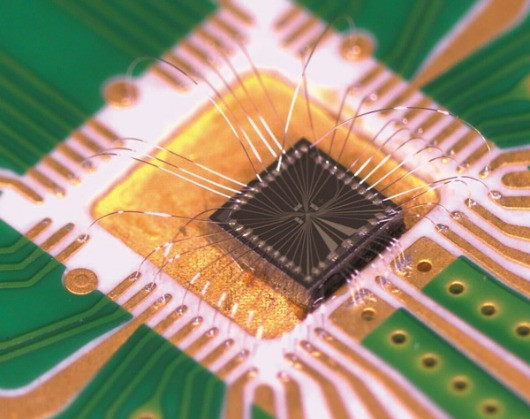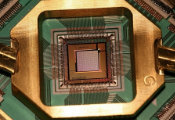Fast and Faithful Quantum Measurements of Electron Spin Qubits
Jun. 6, 2024 -- Measuring a quantum system quickly and accurately is crucial for realizing reliable quantum computers. Physicists at RIKEN have developed a method that achieves both these requirements in a silicon-based device.

Most practical quantum technologies harness the weirdness of quantum mechanics in a basic element known as a qubit—the quantum equivalent of a bit in conventional computers. Qubits hold and maintain a quantum state.
They can be realized in various systems, including superconducting circuits, isolated atoms and laser beams. Another option is silicon devices that use the quantum state of a trapped electron—specifically, an electron property known as spin. These qubits have a real advantage over other qubits in that they are compatible with existing semiconductor-based computer components and fabrication technologies.
Practical applications of qubits, such as in fault-tolerant quantum computers, require a way to measure the quantum state accurately and quickly—before the quantum state degrades or collapses in a process referred to as decoherence.
Now, Kenta Takeda and Seigo Tarucha from the RIKEN Center for Emergent Matter Science and their co-workers have demonstrated a method for measuring spin in a silicon device with an accuracy of more than 99% and in just a few microseconds—hundreds of times faster than typical decoherence times.
Measuring the spin of a single electron directly is massively challenging because it involves detecting tiny magnetic fields. This limits the measurement accuracy, or fidelity. To overcome this problem, Takeda and his team adopted a different approach—they converted the spin into an electrical charge.
To test this approach, they built a silicon device that trapped two electrons (Fig. 1). Owing to a fundamental principle of quantum physics that states that no two electrons can occupy the same quantum state, the team was able to infer the quantum state by monitoring current flowing through the device. In this so-called Pauli spin blockade effect, the measurement signal results from the difference in the charge states, which is easier to measure than magnetic fields.
“Spin measurement in silicon-based spin qubits has previously been slow, and its fidelity wasn’t high enough,” explains Takeda. “We improved the Pauli spin blockade by optimizing the structure of our device to enhance the sensitivity of the charge sensor. We also improved the spin-to-charge conversion technique so that the spin state was well preserved during the process. This achievement paves the way for realizing fault-tolerant quantum computing in this platform.”




































